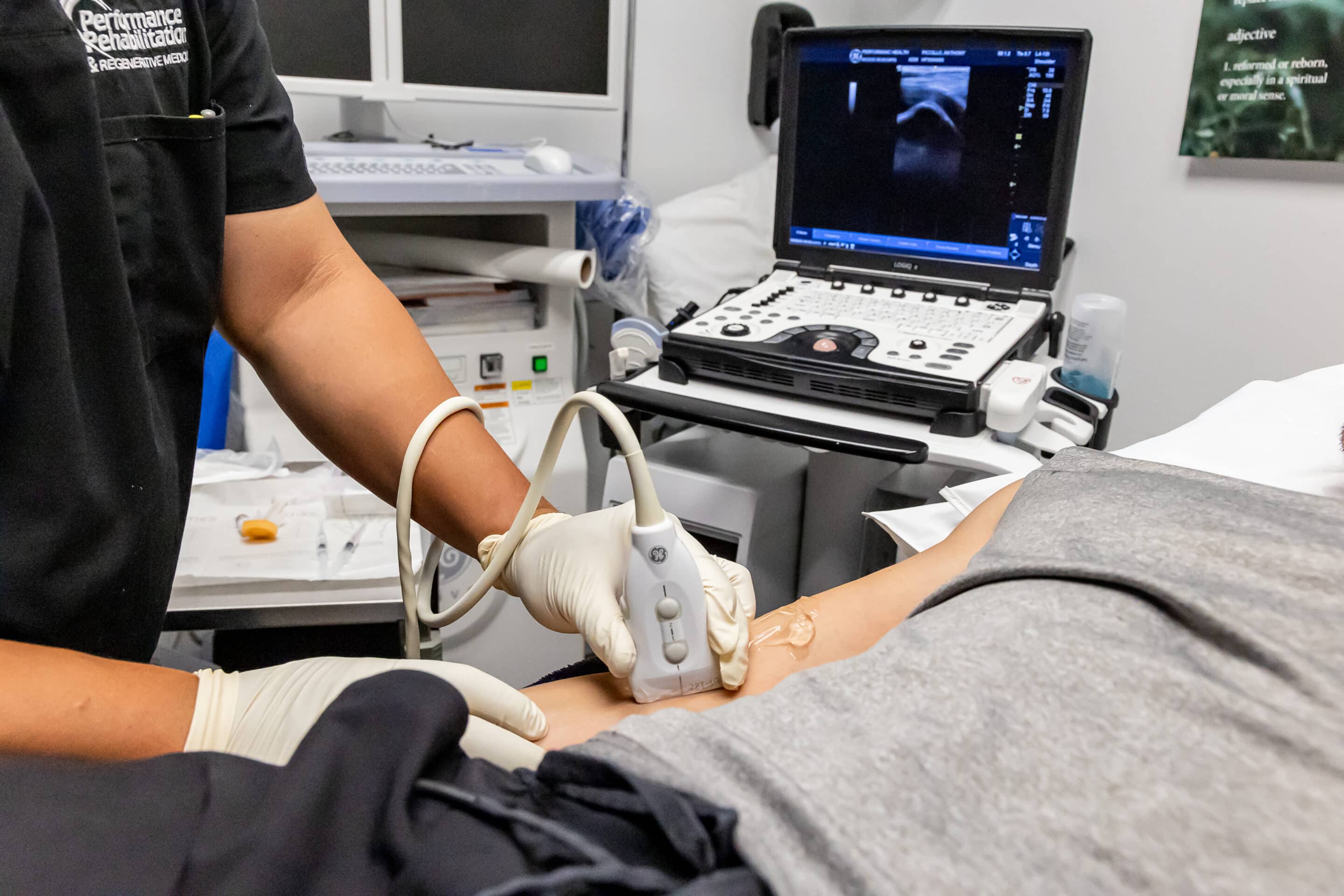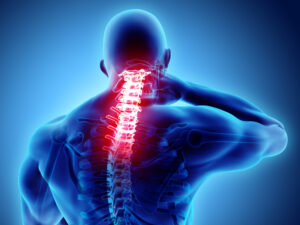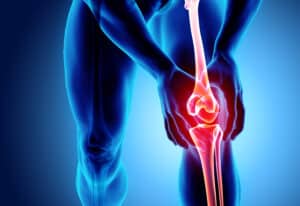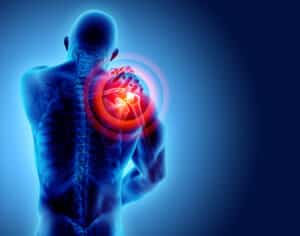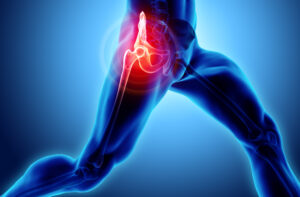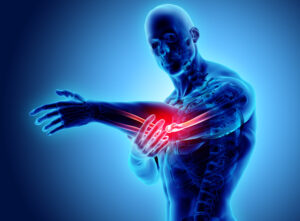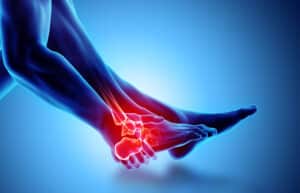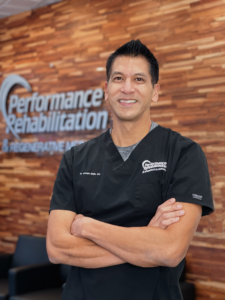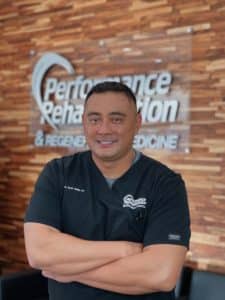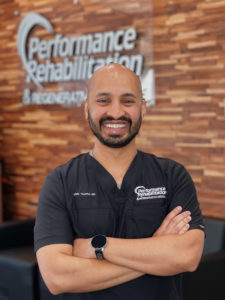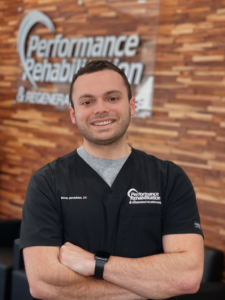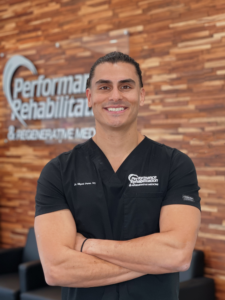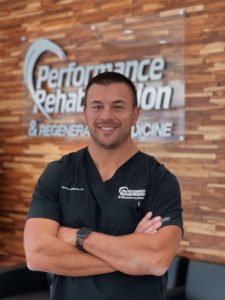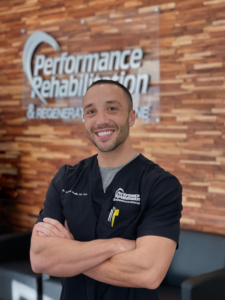Lateral Epicondylitis and Tenex Health TX™ Treatment
Overuse of the common extensor tendon causing pain and inflammation is a chronic condition that results in discomfort in the lateral elbow. More commonly known as tennis elbow, lateral epicondylitis is thought to affect 1-3% of the population and as much as 50% of the tennis players during their career.1 It is understood that the pain is caused by an acute inflammatory reaction as a result of repetitive activity, The ailment is most commonly seen in adults, both male and female, between the ages of 30 and 60 years old. A higher percentage is seen in individuals who live an active lifestyle in the 40 to 50 year-old age range.1
The term “tennis elbow” r
When conservative treatments, such as physical therapy, acupuncture or bracing fail to yield lasting results, many seek alternatives to assist their continued pain. When these interventions fail there are few remaining options for treatment. Surgical procedures have been used to treat the tendon with numerous methods. These procedures, however, have not been shown to adequately target the injured tissue and consequently, results are mixed.2
Tenex Health TX™ for Tennis Elbow
The use of percutaneous tenotomy has been utilized in the treatment of lateral epicondylitis with promising outcomes. The Mayo Clinic together with Tenex Health has developed a new technique named Fasciotomy and Surgical Tenotomy (FAST) utilizing Tenex Health TX™.
The Tenex Health TX™ procedure provides continuous ultrasonic frequencies to the damaged tissue, using a TX Microtip, while continuously irrigating and aspirating the area. The technique provides targeted treatment to the injured portion of the tendon, which suggests a more accurate removal of pathological tissue while maintaining the intact healthy tendon. Performed under ultrasound-guided imaging, the use of Tenex can specifically target the tendon and provide a real-time look at the affected area. A non-targeted form of tendon treatment referred to as “tenotomy,” has been shown to be ineffective and often inappropriate in treating tendonopathy.3
The use of the procedure, which specifically targets the injured tissue, Tenex Health TX™, has been studied by Koh et al on the treatment of lateral epicondylitis.3 The study consisted of 20 participants with a history of lateral elbow pain. Each participant had undergone some form of conservative care with limited results. None of the participants had undergone a surgical procedure for treatment of their elbow prior to this study. Outcome parameters included: patient satisfaction, visual analog scale (VAS) pain scores, Disability of Arm, Shoulder and Hand (DASH) scores at 1, 3, 6 and 12 months, and ultrasound assessment at 3 and 6 months.
The site of lesion was identified both with magnetic resonance imaging (MRI) and ultrasonography. Ultrasound has been shown to have a high sensitivity for hyperechoic areas of the tendon, which indicates injury.4 The same ultrasound technique for identifying the damaged tissue is used for guidance during the Tenex Health TX™ procedure. This technique provides the most accurate focus on the treatment area available.
During the Koh, et al study, each participant was treated using the Tenex FAST technique and there was no control group. The procedure was divided into two phases. The first phase consisted of a confirmatory ultrasound, which documented the hyperechoic region of the tendon. During this phase, the TX1 and MicroTip were prepared for the procedure.
The second phase consisted of the Tenex Health TX™ procedure. The participant was provided with a local anesthetic in the form of a lidocaine injection. A stab incision with a No. 11 blade was performed in order to allow entrance for the Tenex TX MicroTip™. The probe tip was then inserted under ultrasonic guidance at the site injury.
Once the Tenex Health TX™ MicroTip™ is delivered to the lesion site, an ultrasonic frequency is delivered to microresect the damaged tissue. During this process there is continuous irrigation and aspiration, which assists in removing only damaged tissue. This process continues until the area of hyperechoic tissue is removed completely from the tendon.
Once the procedure was completed, the small wound was pressurized for two minutes and dressed with a steri-strip. Compression sleeve was provided to the participants to be worn for a period of two days and participants were instructed to perform only light activities and apply ice to reduce swelling for the first 7 days post-procedure.
In the months following the procedure the outcome measures previously discussed, were collected. The ultrasound assessment was given multiple outcome parameters including tendon thickness, vascularity and hyperechoic lesions. At three months, a majority of the participants had decreased thickness. At six months, 19 of 20 participants had a decrease in tendon thickness. The remaining participant had an increase in thickness.
The second parameter for imaging outcomes was vascularity. Increased vascularity within a tendon is understood to be a sign of injury and a pain generator.5 The study showed that six months following the procedure, of those who displayed hypervascularity, 10 participants completely resolved, seven were found to have reductions and one saw no change. In the third parameter for imaging, hyperechoic lesions, after 6 months, 18 of 20 participants had overall reduction within the tendon.
Subjective outcomes trended in a similar manner to the radiographic findings. VAS score for pain dropped significantly throughout the multiple follow-ups throughout 12 months. The first week VAS score compared to pre-procedure was seen to have high significance. DASH scores followed suit and patient satisfaction was recorded at 95%.
The study discussed, is a prime example of clinical outcome that have been seen using Tenex Health TX™ on injured tendons. Although this study is limited to the elbow, the same principal for treatment and outcome measures can be applied to many other injured tendons throughout the body. Other commonly injured areas include but are not limited to: plantar fasciitis, Achilles tendinitis and patellar tendinitis.
Although there is not a strong collection of literature, there can be a correlation seen in results found with non-specific tenotomy within the lateral elbow6, 7 and many other tendon injuries. The incorporation of the Tenex Health TX™ procedure with similar outcome yield to Koh’s study would provide increasing evidence for the indication of early intervention of chronic tendonopathy. Continued examination of the outcomes of the procedure is suggested to identify the best treatment options.
The use of Tenex Health TX™ to treat chronic tendonopathy has promising evidence suggesting positive patient outcomes in a clinical setting.
About the Authors:
Joseph Mejia D.O., F.A.A.P.M.& R, is a graduate of University of Michigan and West Virginia School of Osteopathic Medicine. He is Board Certified in Physical Medicine & Rehabilitation and Sports Medicine. Dr. Mejia received his Fellowship Training in Interventional Pain Management from University of Medicine and Dentistry. He has advanced training in Regenerative Medicine and is the Medical Director and Partner of Performance Rehabilitation & Regenerative Medicine.
- Verhaar JA. Tennis elbow: anatomical, epidemiological and therapeutic aspects. Int Orthop. 1994;18:263-267. < https://www.ncbi.nlm.nih.gov/pubmed/?term=Tennis+elbow%3A+anatomical%2C+epidemiological+and+therapeutic+aspects>
- Potter HG, Hannafin JA, Morwessel RM, DiCarlo EF, O’Brien SJ, Altchek DW. Lateral epicondylitis: correlation of MR imaging, surgical, and histopathologic findings. Radiology. 1995;196(1):43-46. < https://pubs.rsna.org/doi/10.1148/radiology.196.1.7784585?url_ver=Z39.88-2003&rfr_id=ori:rid:crossref.org&rfr_dat=cr_pub%3dpubmed>
- Koh JSB, Mohn PC, Howe TS, Lee BP, Chia SLYang Z. Fasciotomy and Surgical Tenotomy for Recalcitrant Lateral Elbow Tendinopathy. AM J Sports Med. 2003 Mar;41(3):636-44. < https://ajs.sagepub.com/content/41/3/636.abstract>
- Zeisig E, Ohberg L, Alfredson H. Extensor origin vascularity related to pain in patients with tennis elbow. Knee Surg Sports Traumatol Arthrosc. 2006;14(7):659-663. < https://www.ncbi.nlm.nih.gov/pubmed/?term=Extensor+origin+vascularity+related+to+pain+in+patients+with+tennis+elbow>
- Cook JL, Malliaras P, De Luca J, Ptasznik R, Morris M. Vascularity and pain in the patellar tendon of adult jumping athletes: a 5 month longitudinal study. Br J Sports Med. 2005;39:458-461. < https://bjsm.bmj.com/content/39/7/458>
- McShane JM, Nazarian LN, Harwood MI. Sonographically guided percutaneous needle tenotomy for treatment of common extensor tendinosis in the elbow. J Ultrasound Med. 2006;25(10):1281- 1289. < https://www.jultrasoundmed.org/content/27/8/1137.long>
- Zhu J, Hu B, Xing C, Li J. Ultrasound-guided, minimally invasive, per- cutaneous needle puncture treatment for tennis elbow. Adv Ther. 2008;25(10):1031-1036. < https://www.ncbi.nlm.nih.gov/pubmed/?term=Ultrasound-guided%2C+minimally+invasive%2C+per-+cutaneous+needle+puncture+treatment+for+tennis+elbow>

